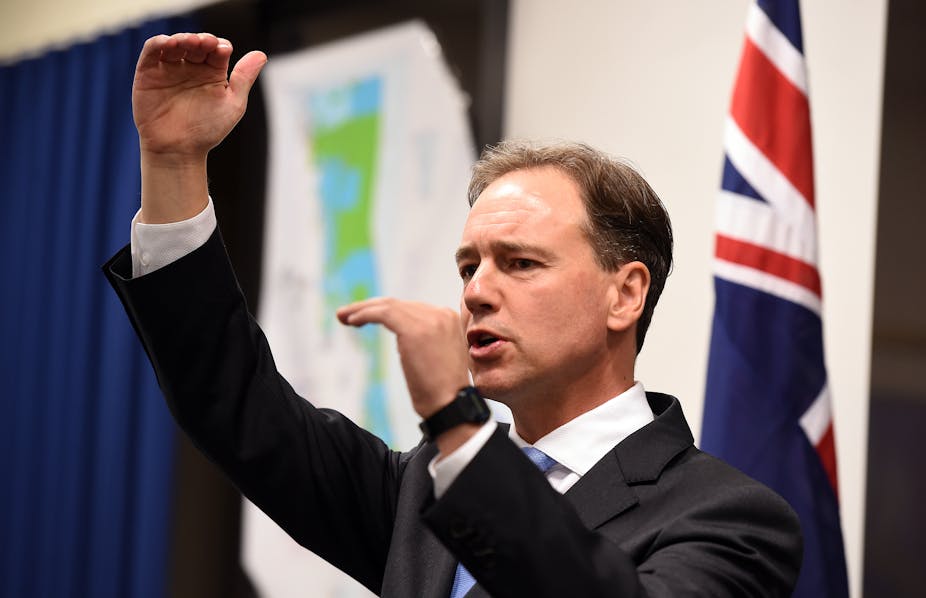The Conversation’s Budget briefs series aims to answer reader questions about the 2015 federal budget. Thanks to readers Amy Holly and Carolyn van Langenberg for this question.
Not much was announced in last night’s budget on climate change and renewable energy. However, a total of A$400 million was announced for drought assistance and tax breaks for farmers to implement water infrastructure, which could become increasingly necessary given we are seeing possibly the biggest El Niño – a phenomenon often linked to drought in Australia – since 1997-98.
Although not badged as such, this could be considered as climate-related finance to deal with increasingly extreme drought, and flood, climatic conditions in Australia. The new package includes money to boost economic activity in the towns and regions badly hit by drought, as well as drought-specific loans, infrastructure grants, and financial and psychological counselling for families finding it tough under these conditions. This is actually rather forward-thinking, given the increasing physical, economic, and psychological problems associated with dealing with climate change.
Unfortunately, the rest of the budget doesn’t show much change in the current rate of climate change investment.
No new funds for cutting emissions
There is no change in allocation of money to the Emissions Reduction Fund (ERF). A$2.55 billion was previously allocated to the ERF under the government’s Direct Action policy. This is the principal mechanism for reducing emissions in Australia, in line with its internationally agreed target to cut emissions by 5%, relative to 2000 levels, by 2020.
The fund’s first “reverse auction”, held last month, yielded 47.3 million tonnes of carbon reductions at an average price of A$13.95 per tonne. This was cheaper than the previous government’s carbon pricing scheme, although there are concerns about whether the ERF’s budget is big enough to meet the target.
Federal environment minister Greg Hunt noted recently that he would not seek any extra funds for the ERF. Yesterday’s budget certainly reflects this.
Closing down climate advice
The Budget features A$6.1 million to fund the continued operation of the Climate Change Authority, which advises the government on issues such as emissions reduction targets. But there is no funding after the end of 2016, when the Authority is presumably set to be shut down.
The Emissions Reduction Fund Expert Reference Group has been shut down as part of wider savings in the Environment Department under the “Smaller Government” savings package, with the government saying the group’s work is done now that the ERF is up and running.
Although the government’s Energy White Paper noted the proposed abolition of the Australian Renewable Energy Agency (ARENA) and the Clean Energy Finance Corporation, both seem to have avoided the chopping block for now.
Other measures
The Green Army is on reduced rations, with the Budget noting savings of A$73.2 million due to “efficiencies” in this network of local environmental and heritage projects. “The Government will continue to provide $701.9 million over four years from 2015-16 for Green Army projects and will deliver on its election commitment of 1,500 projects in 2018-19,” it says.
Yet Greg Hunt has claimed the Green Army is A$179 million better off than in last year’s budget.
There is no new funding for renewable energy, with the government and opposition finally having agreed, bar a few last-minute details, on a compromise to reduce the Renewable Energy Target (RET) to 33,000 gigawatt hours by 2020, down from its previous level of 41,000 GWh. Although certainty now exists, investment renewable energy still faces multiple challenges in Australia. The RET scheme is an industry cross-subsidy and is therefore not directly funded by the taxpayer.
There is A$200 million for the Green Climate Fund, but this was already covered under the aid budget. Australia will donate the money over four years to the US$10 billion international fund to help developing nations tackle global warming.
There is also an extra A$100 million for the Reef Trust, besides the A$40 million previously pledged, which will aim to improve water quality and coastal habitat, control pests, and protect species like the turtle and dugong living on or near the Great Barrier Reef. The budget doesn’t mention the major long-term challenge facing the reef: climate change and ocean acidification.
Prime Minister Tony Abbott may have predicted that the Budget would be “dull and boring”, but it certainly doesn’t read that way if you’re considering Australia’s need for a sustainable economy that is resilient to both climate change impacts and in line with the direction our key trading partners are taking on a low-carbon future.
Read more of The Conversation’s Federal Budget 2015 coverage.

